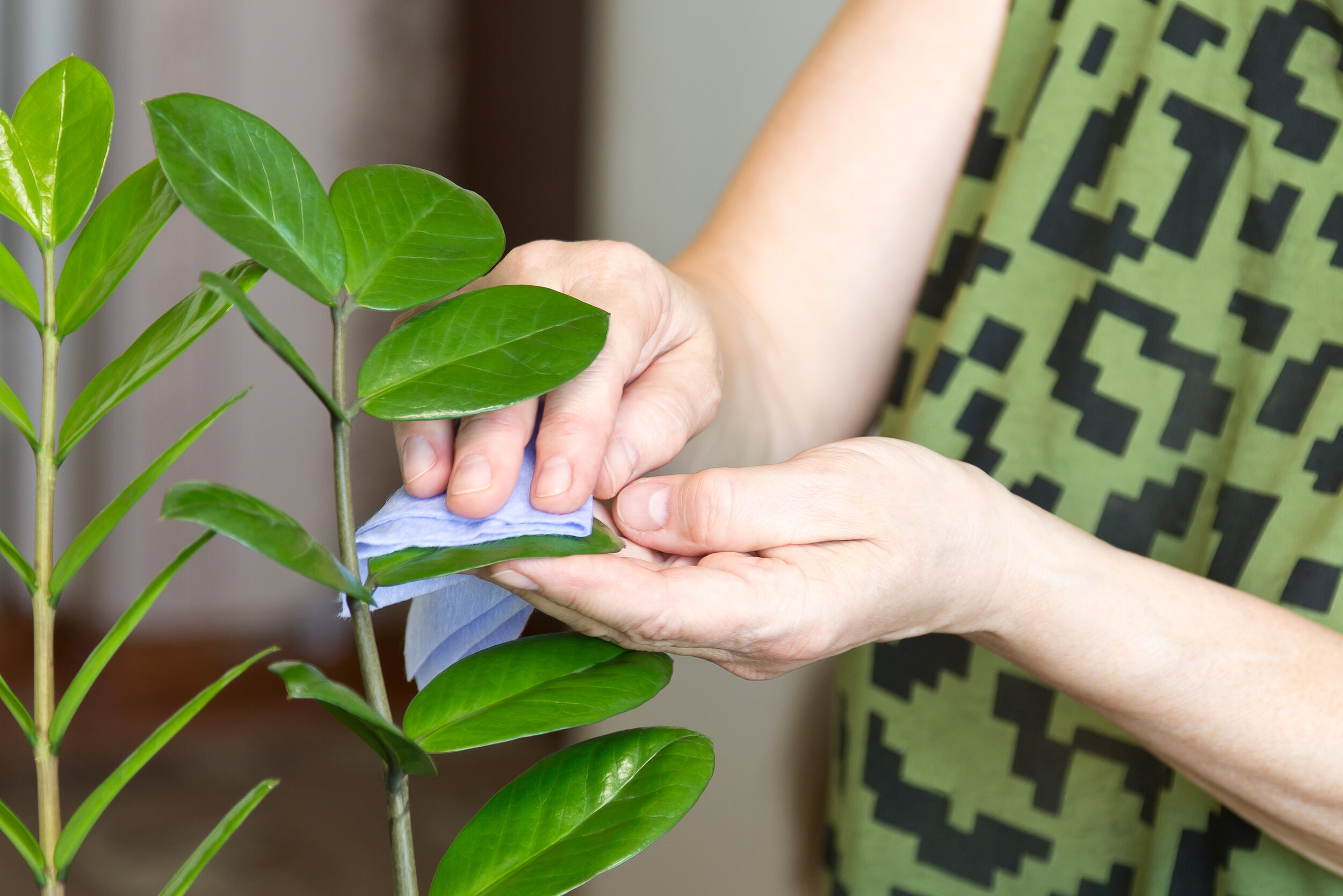How to Spring Clean your Houseplants
Spring is here! If you’ve been looking forward to this moment as much as we have, you might’ve already gotten your hands dirty in your garden, but don’t forget about new growth from your houseplants! Sometimes you forget about your plant residents when they seemed to have been sleeping all winter-- they likely shed a few leaves or maybe you lost a plant or two to the cold, altogether. But spring is here, and more sunshine and warmth is on the horizon, which means your plants will be looking a lot happier in the coming weeks. To make sure your plants are able to reach their full potential and recover from the winter months, we like to give them a little bit of support. Spring clean with us! Follow this quick and easy checklist and you’ll be prepared for the changing season!
Dust off your Plants
Just like the books on your shelf, plants get dusty too. Plants are living, breathing things just like us, and when too much dust isn’t good for our health, it’s not good for our plants either. That layer of dust acts almost like an unhealthy sunblock, and our plants need to feel light on the surface of their leaves to photosynthesize. Take a cloth, like a soft paper towel, tissue, or damp towel, and gently wipe the dust off of all your leaves. For cacti or delicate plants, use a paintbrush to help clean those smaller or hard-to-reach places. Watch out with cacti, as to not get pricked!
Mist your Plants
Plant experts go back and forth on whether or not misting is beneficial for your plants. It is a way to create a little bit of humidity for tropical plants that aren’t living in a tropical environment. In addition to dusting, it will help ward off any harmful mites hiding in your plants. However, this does not replace watering, and you should follow a regular watering schedule. Your cacti, succulents, and plants that like a dry and desert-like environment won’t like an additional mist.
Is it Time to Repot?
Repotting your plant in the winter is not ideal and could harm your plant. But now that it’s warmer, your plant will likely be able to tolerate some change to its environment. If you know that your plant is a quick grower, maybe repot it into something that it can grow into during spring. Or if your plant has been housed in the same pot for a year or two, it might be time to freshen up its soil. A changing season is always a good opportunity to reassess your collection and the needs of your plants.
Refresh with Clean Water Grow All-Purpose Plant Food
The beginning of the season is a great time to give your plant some extra nutrients. For houseplants, use Clean Water GROW All-Purpose Plant Food. Add a tablespoon for every ten-inch pot. This sustainable and slow-release fertilizer will release nutrients only when the plant needs it. The plant food is activated when the roots indicate that they are thirsty, so make sure you mix it in with the soil near the roots. After application, you won’t have to worry about fertilizing your plant for the rest of the season!
Adjust your Watering Schedule
It is likely that you slowed down your watering schedule in the wintertime. Now it is time to increase it to a more regular schedule. Every plant is a little different, but generally, your plants will be thirstier as warmer weather approaches. A handy way to make sure you are not over or underwatering is by creating a schedule on your phone with set notifications. Do it yourself in your reminders app, or download a plant care app that will give you tips on care for your individual plants. A good rule of thumb for watering is to stick a finger or chopstick 2 inches deep into your soil and make sure the soil is dry before adding more water.
Reposition your Plants
Your plants might be perfectly happy where they are, and if so, that’s great! But maybe you noticed some of your plants need more light, or with sunnier days, maybe your plant that likes indirect light needs to be moved away from the window. And if you were lucky to experience some growth during winter, maybe a trailing plant has graduated on up to a plant hanger. Check-in with what your plant likes, now is a great time to swap some plants around if need be.
Prune the dead leaves
It is not uncommon for your plant to lose some life over the winter. If your plant is showing browning and dry leaves or has some hanging by a thread, it’s time to let those leaves go. Pruning your plant helps the plant focus on giving nutrients to the healthy leaves and new growth, rather than expending energy on the ones barely hanging on.
Now that you’ve checked off everything on the list, you’re all set up for a bright spring! Make sure to maintain care throughout the season. And remember, these spring cleaning chores should be done regularly and as needed, not just once a year for thriving houseplants. We’d love to see how your houseplants are growing. Use #grownwithGROW when sharing your pictures on Facebook and Instagram. Happy gardening!







